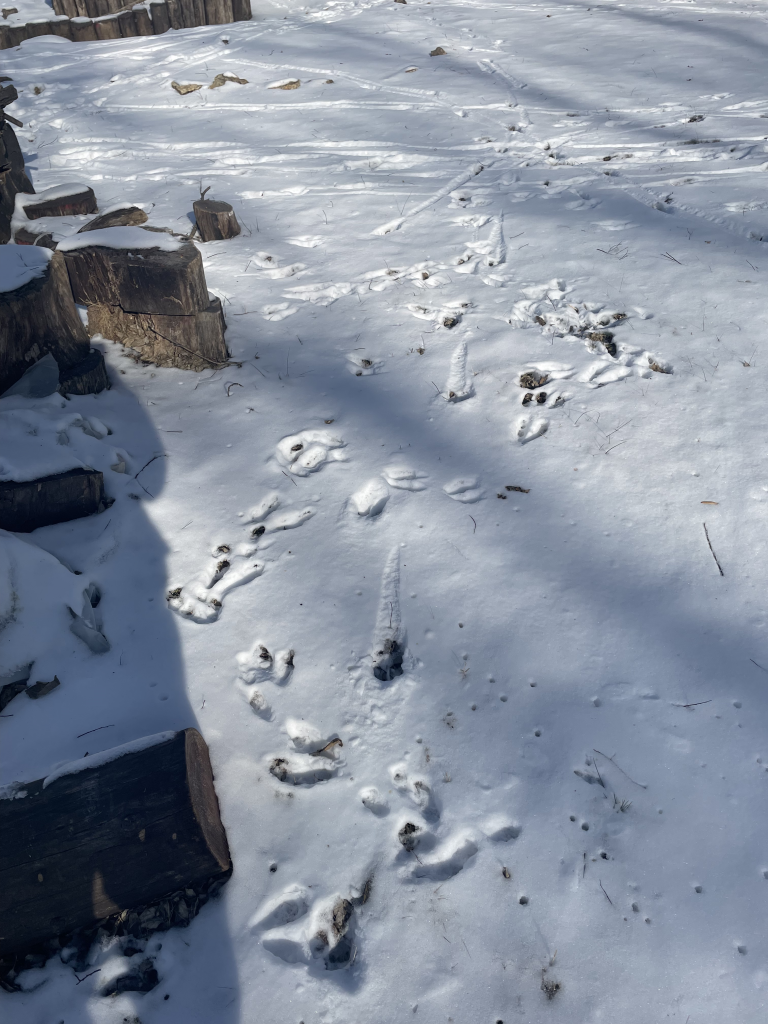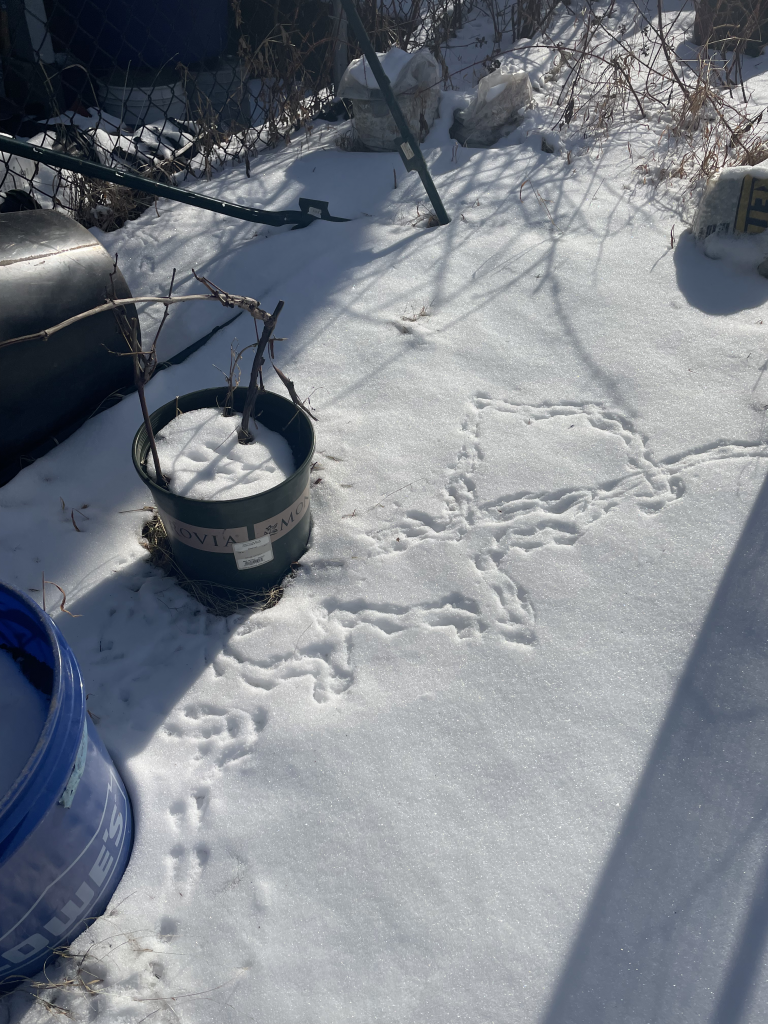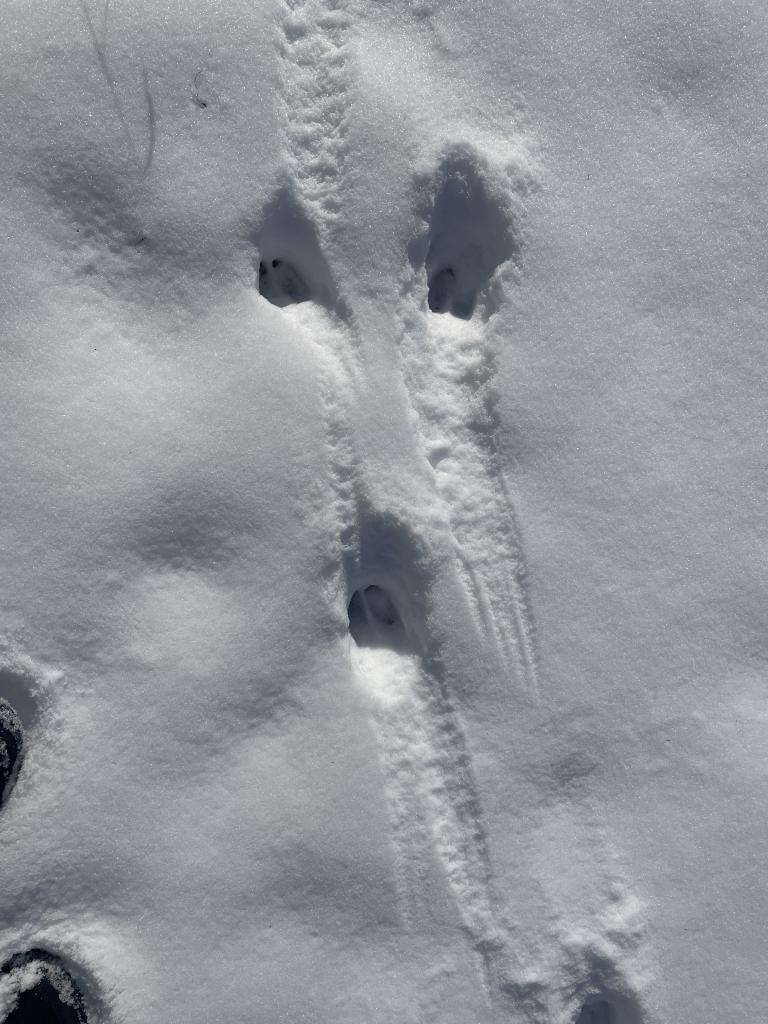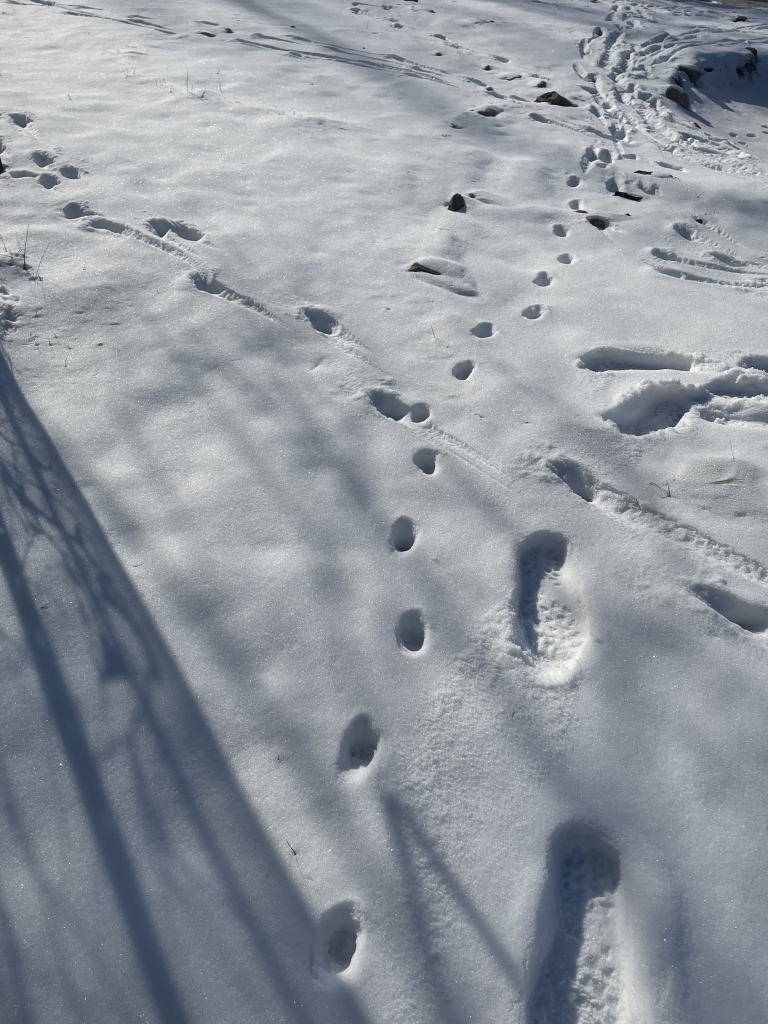So, one of the places the permaculture team is focusing on before the weather turns warm enough for seedlings to be transported to the ground is to identify the full range of animals that are interacting with the system, what they contribute, and what they harm, as well as how we can best handle the issue while adhering to the permaculture principles.
Snow, it turns out, is extremely good at preserving animal tracks, and we were able to capture multiple distinctive tracks.



On the left are rabbit tracks, which can be identified by the two more oblong prints at the front of the long rectangular shape that all four prints make. Rabbits can also be quite the pest at times, eating the plants themselves and not just the fruits or vegetables that the plants yield. Since they greatly enjoy tender plant material, they will opt for the shoots of new plant growth, which diminishes plants’ growth and overall yield.
The middle image depicts some kind of rodent tracks. Although they match the boxy patterns that tend to be left by squirrels, the tracks themselves are a bit smaller than squirrel paw prints. Squirrels as a visitor of the park do little to the plants themselves. They are more interested in the fruit and vegetables, often not eating the whole thing, but just taking a few chunks out of them.
And, finally, the last image captures the deer tracks that crisscrossed all over the park’s slope. The tracks in the snow gave us information, not just confirming that the deer are visiting the garden on the regular, but telling us where they entered the garden from and what areas they most gathered around. Deer tracks make it easy to determine the path the deer took. The narrow end of the print is the top of the hoof, further indicated by the draglines their hooves make when they step. The lines tail the print, pointing in the opposite direction of the deer’s movement since as they step, they pick up their hooves relatively cleanly, but the tip of their hooves can drag on the snow when they go to place it down.
Deer are also fond of the tender shoots of new plant growth, often eating the ends of bushes as well as any flowers or fruit that get that far along. However, unlike rabbits, they have quite a taller reach and can do quite a bit of damage if they come in their herds.
The tracks below are not surely identified since the snow was so deep, some tracks didn’t preserve the shape of the print, rather just indicating something walked that way. From the gait of the steps alone, it could be a house cat of some kind, or, as indicated by the depth of the print, some heavier wild animal with a similar gait, like a coyote.

All of this data reflects the Observe part of “Observe and interact”, which we are implementing to come up with solutions to the destruction of plants.
Link here to learn more about animal tracking in your backyard.
As for keeping these wild visitors out of the park, and any garden for that matter, there are a few different routes to go down. The most effective, but most costly if wanted to be done well, would be to build a fence around the entire perimeter of the garden. However, this doesn’t align so well with the permaculture principles. Instead of driving the deer out with a manmade barrier, using natural deterrents could be both a cheaper and more welcoming solution.
So, instead, the park wants to plant pepper varieties that are foul-smelling to a wide selection of wildlife. This way the garden is obtaining a new yield while also preserving the natural capital that becomes compromised by the deer and rabbits.